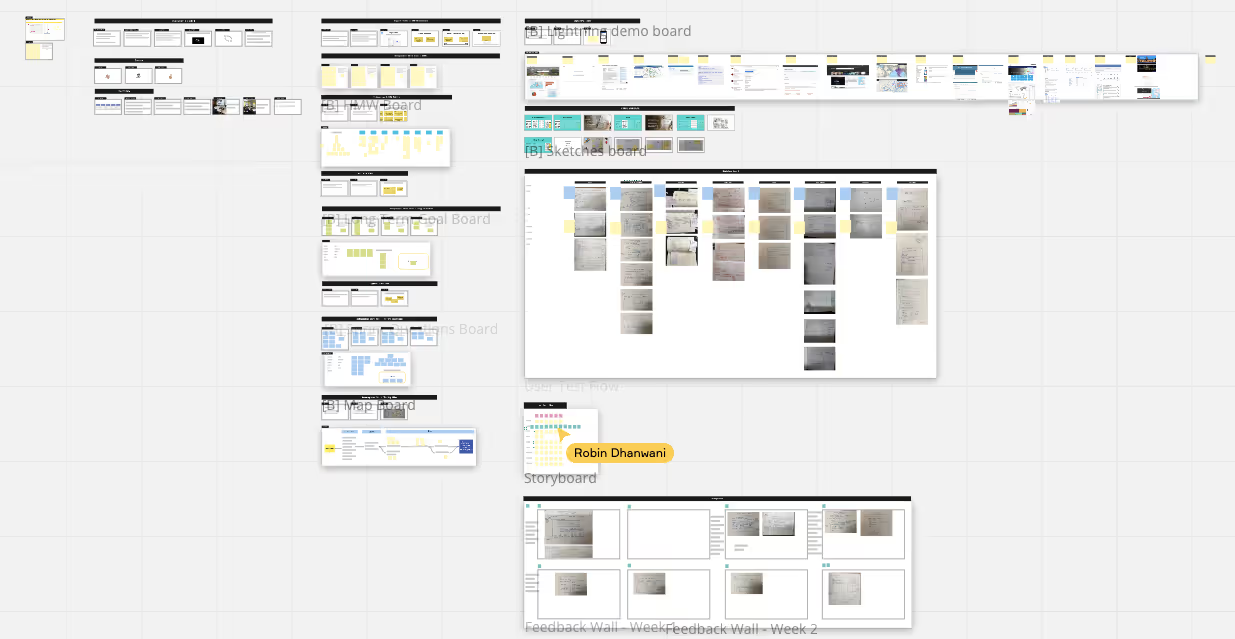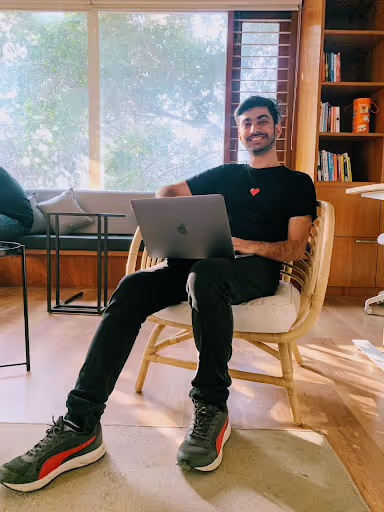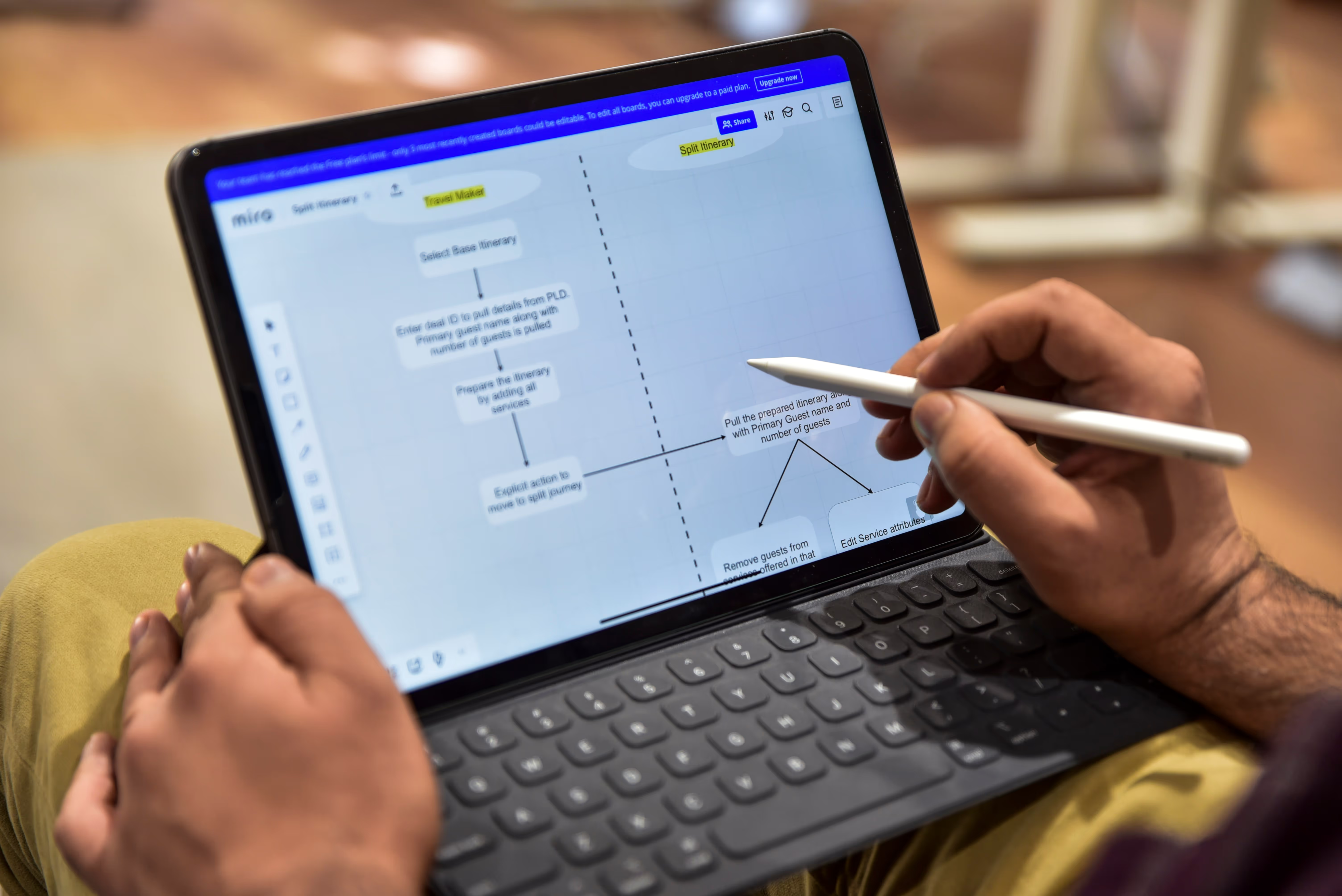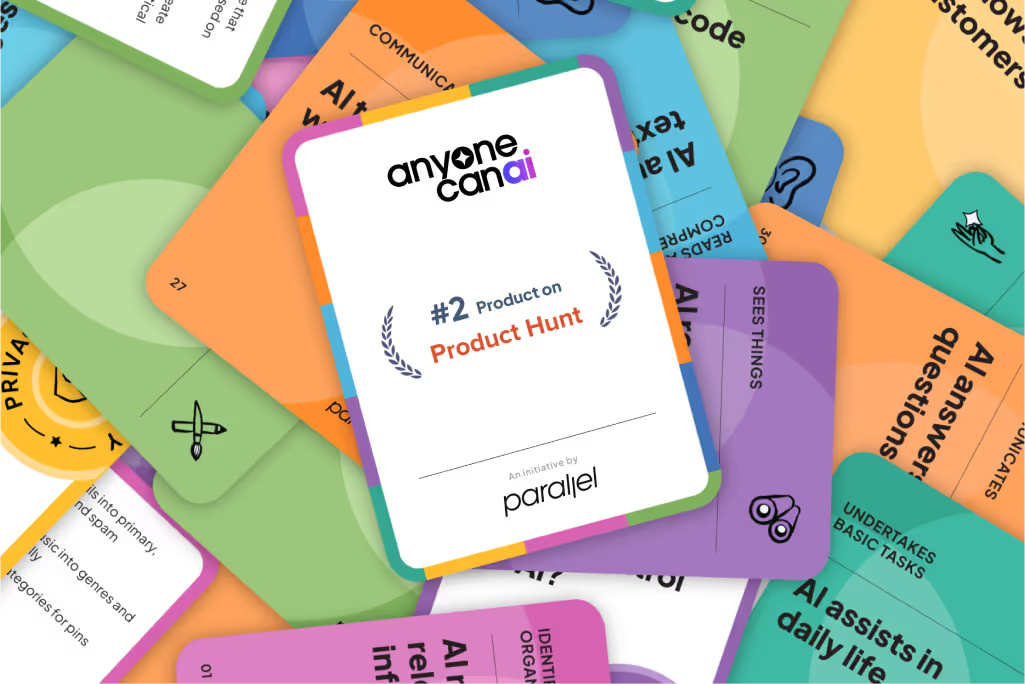What We Love and What We Hate About Remote Design Sprints
We've been running Design Sprints in person for 4 years. But 3 months ago, we moved to doing them online, at home, within our screens. Here's our verdict on remote Design Sprints.

With the entire world connecting from home, it was only a matter of time until Design Sprints came online. Tools like Mural, Miro, Loom and Zoom have certainly made the transition easy for us facilitators.
At Parallel, we've been running Design Sprints for the last four years. Most of these, if not all, were in person, in spacious environments, with Post-its, huge whiteboards, screens and our favorite stationery.
Over the last three months, we’ve switched to hosting the entire sprint experience online, at home, within our screens.
We sat with Robin Dhanwani, Founder at Parallel, and asked him to share what he thought about the remote sprints and reflect on his learnings from running them.
What were your first thoughts on running Design Sprints remotely?
Of course, the first thing I would tell anyone is that in-person Design Sprints are honestly more fun. It's great to have everyone in the same room solving problems together.
When we went remote because of COVID, I wasn't super excited about doing remote Design Sprints. We didn't think it would work. We were worried, will people really be engaged online? Can they spend consecutive days online for a sprint?
But we've now done three Design Sprints remotely, and we've been pleasantly surprised to see that they're actually working well. We've had the same quality of output. People have been engaged, and they've been able to collaborate, come up with new solutions and take big decisions.
I think if you give a framework to the entire collaboration process, like a Design Sprint, it helps us collaborating online. This is a new thing for all of us, and we didn't think it would work, but it's going very well.
For example, after the first week of one of our remote sprints, the client realized they were going in the wrong direction with their product. They then went back to the drawing board and course-corrected their entire model within a day. It doesn't matter that we were working online — the sprint still helped quickly give them clarity so they could figure out where they wanted to go as a company.

How easy has it been to make the switch to remote?
It's easier today because there are so many tools and resources at our disposal. Lately, top companies have been figuring out how to improve remote collaboration. That translates to quicker access to better, cheaper (or even free) alternatives.
Tools like Mural and Miro have virtual Post-its, whiteboards, timers and voting dots. You can draw, upload sketches, upload references, run voting — all the things you'd see in an real-life Design Sprint.
Hiring user testers has also never been easier.
For example, in our recent remote Design Sprints, we were able to recruit some really great participants, including a product manager from Microsoft and a branding expert. It was really easy to find and recruit them in just a day, despite the fact that we were searching for people in niche audiences — for example, mountaineers for a trekking app.
We always recruited users and ran user tests online, so that's nothing new. But now, with everyone working from home, we're all becoming more used to collaborating and working online. I don't think that anyone today is going to find it weird to do a user test online, unlike, say, 6 months ago.
Is there anything else that's become easier with remote Design Sprints?
Documentation is a big one.
After every Design Sprint, we used to have a pile of 500 Post-its and another big pile of sketches. We'd have to digitise them to create a report, then we'd recycle everything.
Over the last few months, this effort has been replaced by sharing links for the online tools we used. Everything is already digital, so now you just have to organize things a bit and you're done.
For example, we finished one of our remote sprints on a Saturday. Within a couple hours, we had compiled all our insights and sent the report to the client. On Sunday, their team was discussing it. It's just so much faster when we don't have to digitise everything.
Even better, it’s a lot easier to write and rewrite ideas remotely. It is quick, it is clear and we don’t have to deal with illegible handwriting. It's a small point, but it makes a big difference.

What about the flip side? What has become more difficult with remote Design Sprints?
There are two challenges we've been facing that aren't really a problem in person.
The first is time management. Whatever takes 15 minutes to do offline takes 25 minutes to do online.
It's hard to facilitate video discussions. People will speak over one another, and that just doesn't work online. People will just go on and on, and it's very difficult to stop them. One of our remote sprints included a team with four co-founders, all with strong opinions, and facilitating it was a challenge. Everything ended up taking longer than we planned.
There are so many things you can do in person to control a group and help them move faster, but it's much more difficult to do online. The pace just ends up being slower.
The second challenge is that a lot of people struggle with software, even great software. For example, using paper and dots and whiteboards in person is naturally much easier than doing it online.
People have dragged the whole Mural board (rather than their own notes), moved the wrong Post-its, deleted other people's comments, lost their votes... It's a huge distraction, and it's really frustrating for me as a facilitator.
We've also had difficulties with using Zoom. People turn off their cameras, more than one person talks at once, people stay on mute when they're trying to talk... Sometimes people just have friction with tools, no matter what tools you choose.
What have you noticed on the client front? How have they reacted to participating in a remote Design Sprint?
Clients have been skeptical when we say that we're doing our Design Sprints remotely. They are unsure about the process, don't know how it will turn out, and aren't confident we could pull it off.
For example, we recently spoke to a client who was super excited about running a Design Sprint. And even though they needed it, they decided to postpone the sprint until after COVID. They just weren't convinced it could be done remotely.
That client aside, we've been amazed to see how our clients are responding to remote Design Sprints. They've been surprised by how much they can accomplish, despite being online.
They've also been happy about how there's much less friction. They don't need to travel to an office, and they don't need to block 2 full days anymore. (We've changed our remote process to 3 half-days, since it's harder to stay focused all day online.)
For example, we had a recent client who insisted on doing their Design Sprint in person — after all, they were only 10 km from our office, and they lived right next door to one of our designers. We convinced them to go remote, and they were really pleased. It was safer, everyone could join, and we ended up getting the same results we would have gotten in person.
Even months later, new clients are still skeptical. But now that we're not skeptical, now that we've developed our own belief in the process, we're trying to share that confidence with them.

How else has going remote affected clients?
A year ago, we had three experts fly in from London and join us for a week’s sprint in Bangalore. There were also other times when people flew from France or other cities in India to join sprints.
We've also had to postpone or even cancel Design Sprints, because we had to wait to get everyone in the same place.
Now that's not a problem. A lot of large companies have their teams spread out across continents. With remote Design Sprints, it's easy to invite specialists from different locations.
They can add their expertise to a particular session or the whole sprint — it’s only a matter of deciding a date and time. No flights or waiting needed.
One of our recent remote sprints involved a client whose team was spread across four different cities in India. They were super excited that we could do a Design Sprint online, since they had been struggling with remote collaboration.
How different is it as a facilitator?
It's much more difficult.
When you put a bunch of people in a room and ask them to solve a problem, they're automatically engaged. It's just natural. With our no-device policy, people get passionate and discussion gets intense.
And then, on top of that, in-person Design Sprints have a lot of things that make them cool. There is stationery, Post-its, Sharpies, voting dots, writing pads, nice music, snacks, good ambiance... it all adds charm.
These are the things that make it easy for us to keep people excited.
But when you go remote, you don't have any of that. It's all virtual. All you have is a virtual whiteboard with virtual Post-its and virtual pens. These tools are amazing, but they're different than working in person. It's just more draining to look at a screen and put your thoughts together.
Also, when you're doing a sprint on Zoom with 10 or 15 people, only one person can talk at a time. People can't get excited and talk over one another, which lowers the intensity.
Meanwhile, internet connections are dropping off, and people are constantly getting distracted by their devices. On the same device where people are doing the sprint, they're also getting constant updates on Slack, email and WhatsApp.
All of this makes the role of the facilitator very difficult. It's very challenging to keep the group engaged in spite of the difficulties and distractions. It just means you have to be much better as a facilitator to keep everyone excited.
One thing I've found to be really helpful is having a co-facilitator for remote Design Sprints. They take care of all the logistical challenges — locking boards at the right time, creating the right size dots, handling voting, organising Post-its, etc. — so I can focus on engaging with the group and helping everyone move forward.

Are remote Design Sprints here to stay?
Given a choice, I'd still love to do them in person, but remote Design Sprints are definitely here to stay.
There's less friction, you can do them any time, people don't have to travel, the logistics are much easier, today's software is great, internet is generally very strong... there are just so many things that make them a great option.
They may seem daunting at first, but we see remote Design Sprints as an opportunity and not as a challenge. We have a few more coming up, and we're excited to run them and keep learning how to make the process smoother.

.avif)











